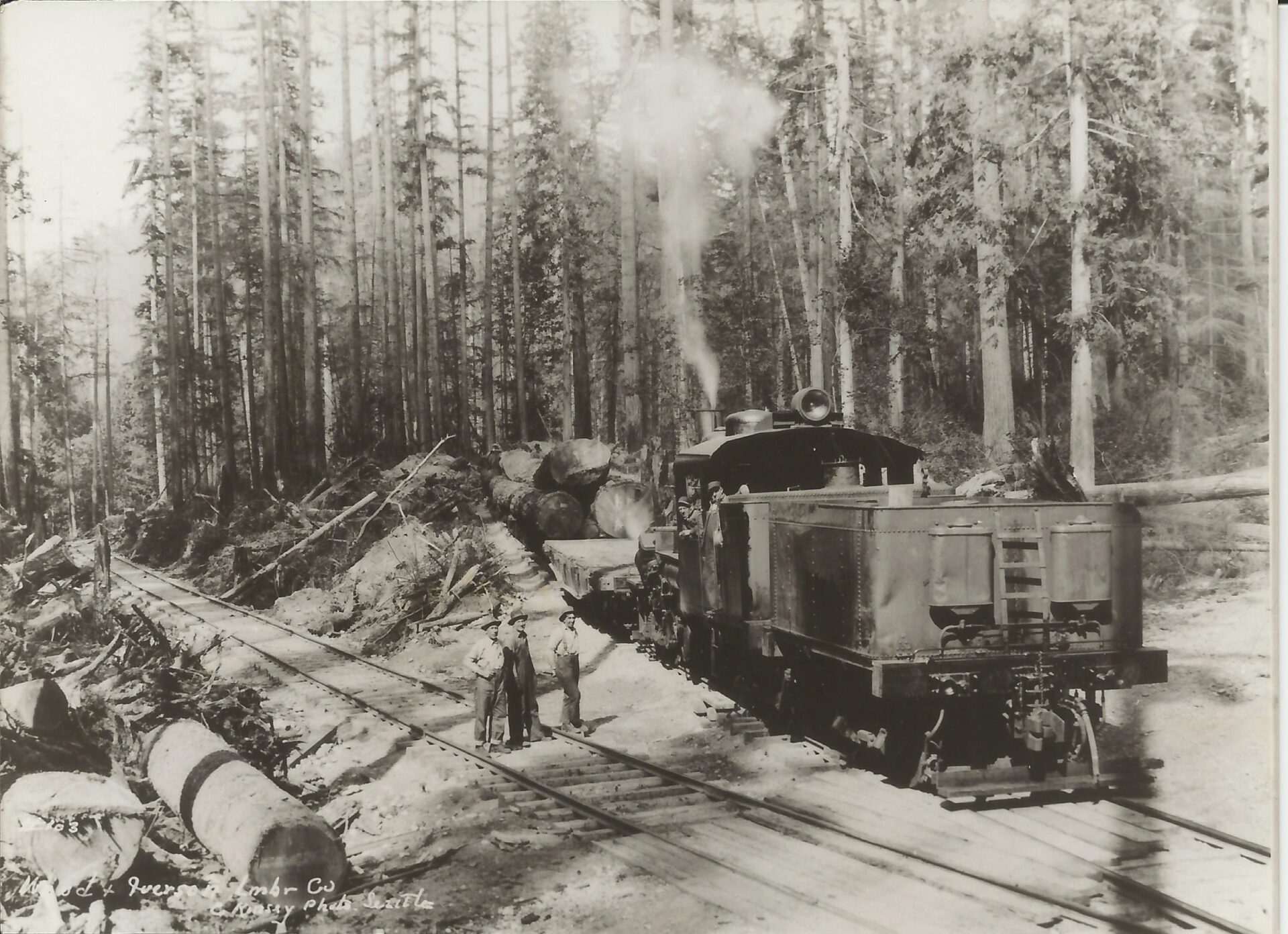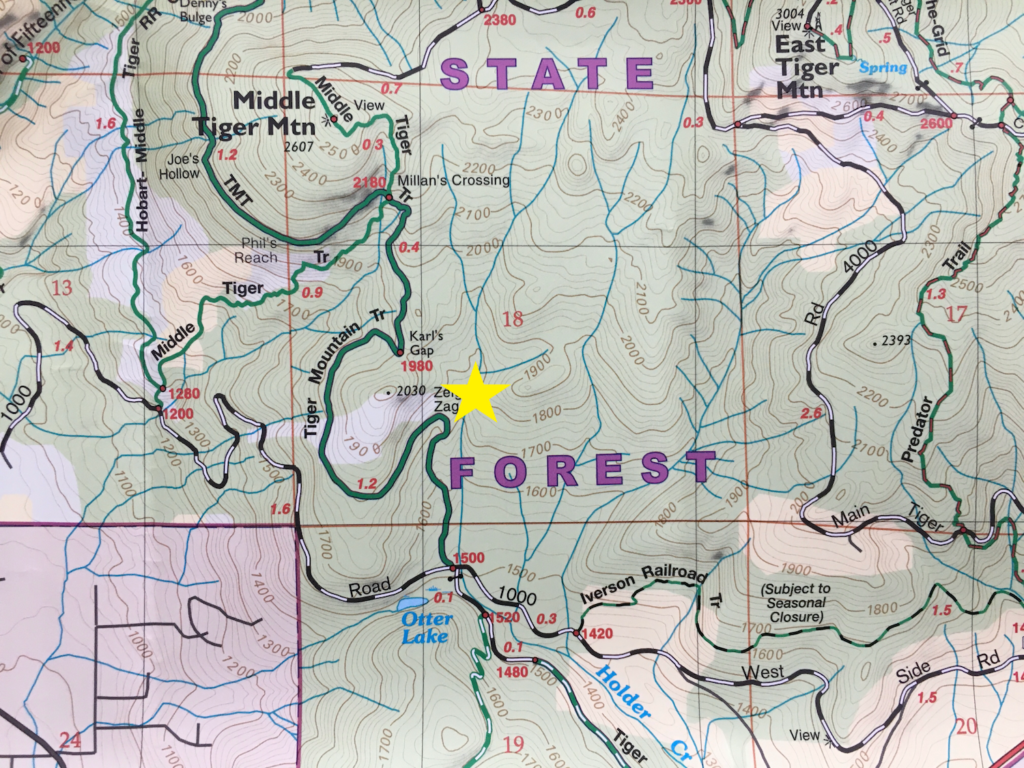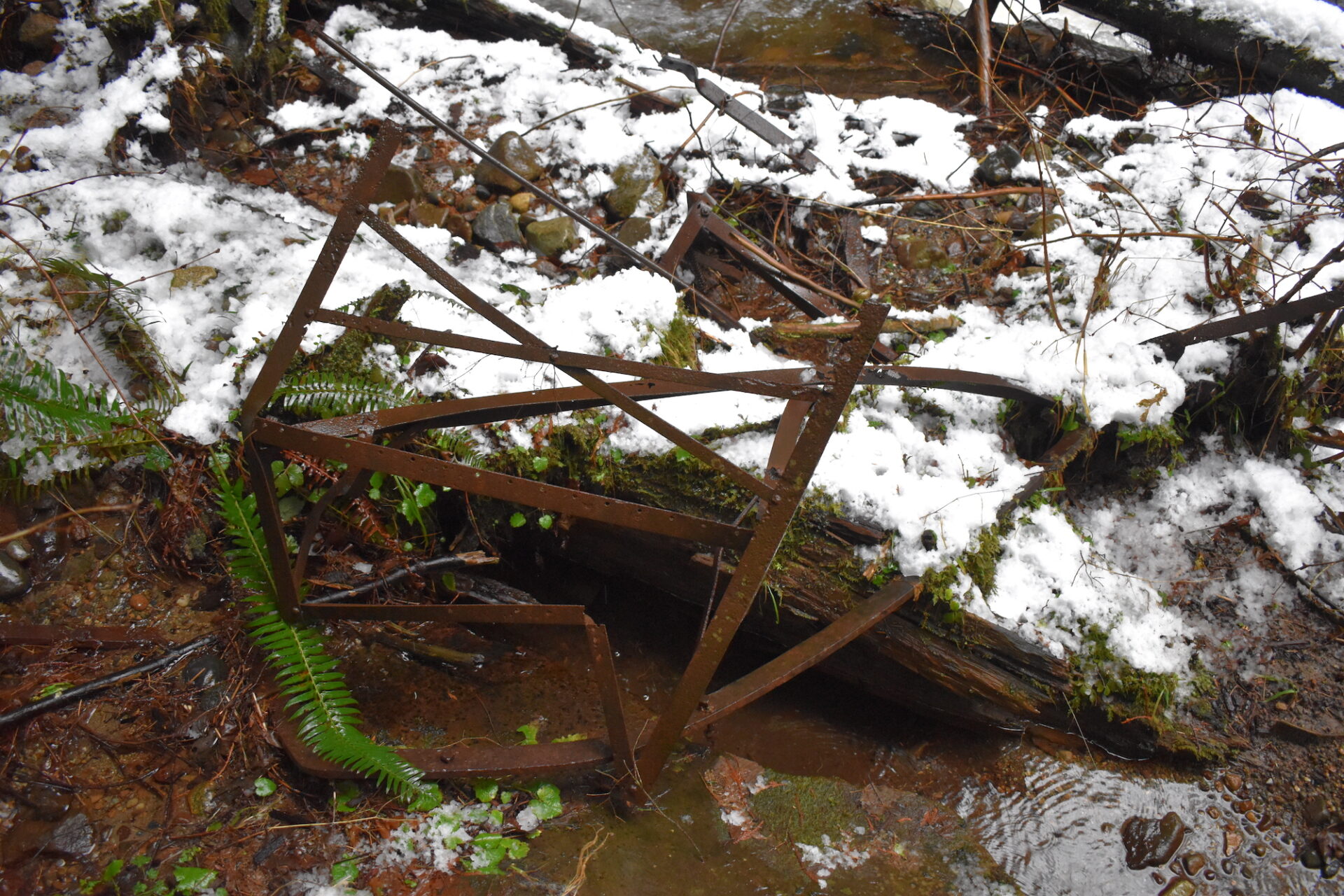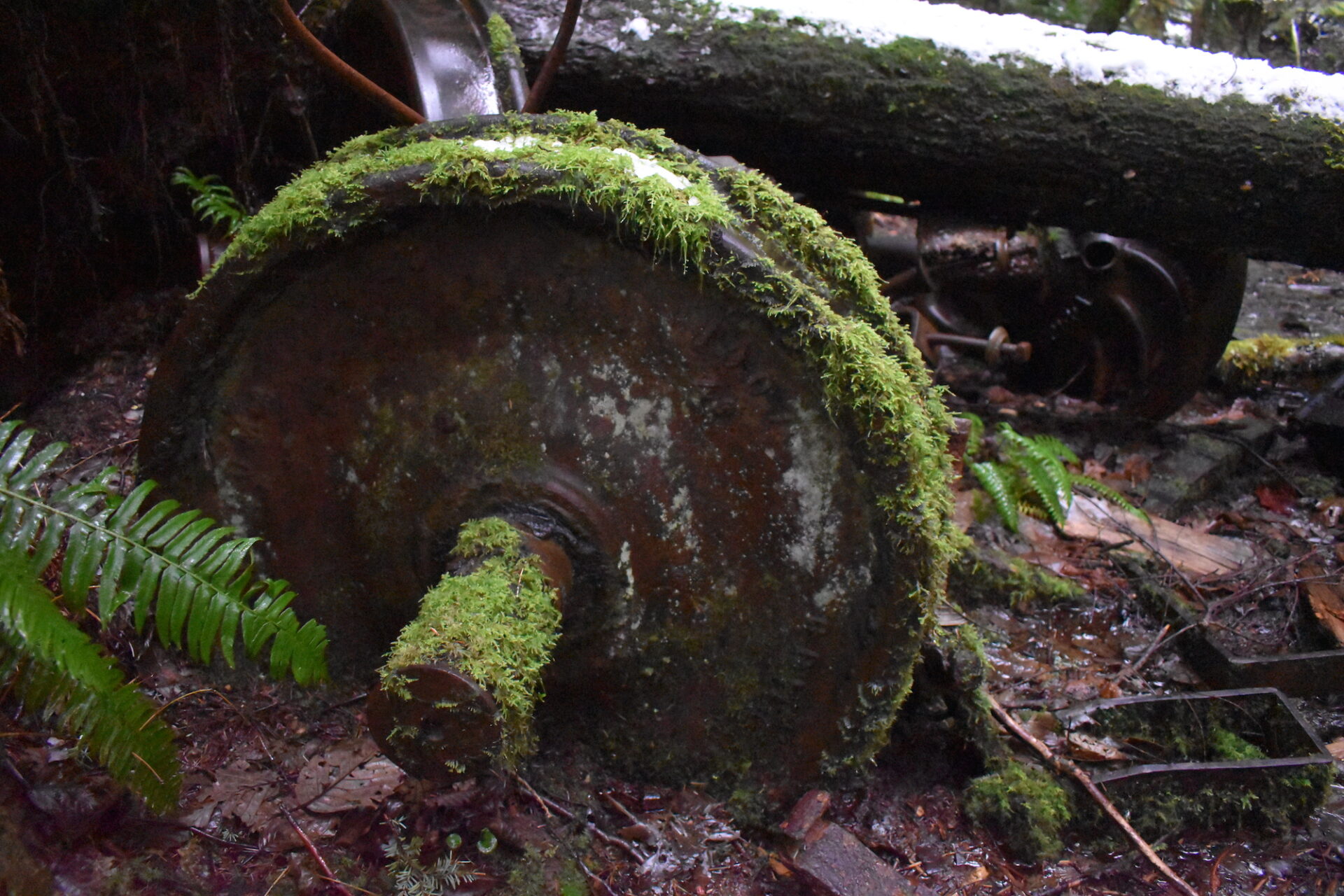Tiger Mountain and the nearby towns of Hobart, Mirrormont, and Taylor have a logging history dating back to the early 20th century. In fact, many of the current trails on Tiger Mountain were built on repurposed old logging railways. Just off the West Side Road near Holder Creek are the artifacts of a train crash from February 23, 1925.
I’ve visited the site several times over the years and it’s always fun to return, poke around, discover new things, and see the site being slowly erased by time and nature. It’s almost hard to believe these artifacts have survived nearly 100 years of Pacific Northwest weather on Tiger Mountain.
The locomotive involved in the 1925 crash belonged to the Hobart-based Wood & Iverson logging company, established by William Wood and Iver C. Iverson in 1912. Wood & Iverson transformed Hobart into an economic boom town with a fully integrated sawmill, store, bunkhouse, and family cottages. At one time, Hobart was home to nearly 200 workers and a population of 500.
Wood & Iverson built a railroad extending from the sawmill 15 miles to Tiger Mountain. Back in those days, when one area of the forest was logged, workers would simply pull up the track and relocate it. Many loggers lived in the woods on railcars or in logging camps.
In 1923, one of the logging camps run by Wood & Iverson near Holder Creek burned. Workers returned on February 23, 1925 to salvage materials and load them onto a train bound for Hobart. That train, likely overloaded, jumped the tracks on the downhill run into Hobart at Holder Creek and careened into the gully below. A 35-year-old man, Nick Karis, was killed in the crash. Two jumped to safety from the rear of the train and four others survived with injuries.

The train was piloted by a 40-ton Climax locomotive and contained several flat cars, an 1890 passenger car, and a Clyde track layer. The crash marked the end of logging in that area and today, wreckage from the crash can still be seen. Train wheels, tie rods, and rails litter the area and the twisted remains of the track layer remain wrapped around a tree. Pieces of the passenger car are still visible in the gully if you look hard enough. It’s a somber Tiger Mountain attraction, but also a fascinating piece of local history to visit.
Want to learn more about the history of Tiger Mountain? I highly recommend the book Wood & Iverson: Loggers of Tiger Mountain by Ken Schmelzer.
Directions to crash site.
The best way to reach the site is to drive to the Tiger Summit Trailhead parking lot off Highway 18, where there is parking at either the lower or upper lot. From the upper lot, hike up the West Side Road approximately 1.9 miles to a trail entrance to the Tiger Mountain Trail on the right. The trailhead is just past where a logging road climbs sharply up the ridge. Once on the trail, hike uphill about 0.4 miles to where the trail takes a sharp turn to the left, sometimes known as Zeig’s Zag on maps. At this bend you should see a fairly well worn path heading off to the right into the woods toward Holder Creek. The train wreckage is scattered around this area, so take some time to investigate, look around, and see what you can find.
From the Upper Trailhead, round trip to the train crash site and back is just over 5 miles with 730′ of gain, making it a great outing for kids or the family. Wear boots if you go after rain or during the winter, the site can be very muddy and mucky. Consider continuing up the trail a short ways to the ridge above to enjoy the views.



If you visit these historic sites, please leave them as they are, so others can discover, enjoy, and learn from these fascinating pieces of Northwest history.











